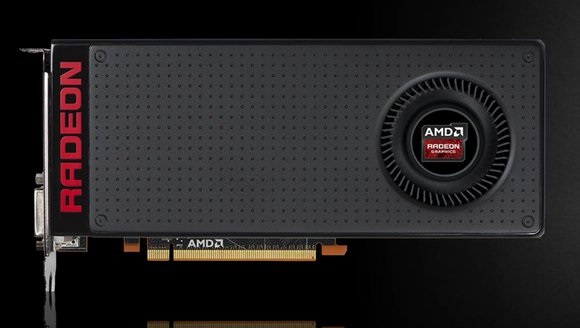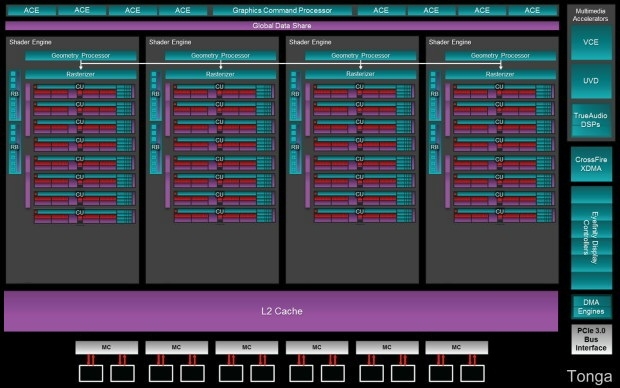Radeon R9 380X

The Antigua graphics processor used in the Radeon R9 380X is based on the latest version of the Graphics Core Next 1.2 architecture, it has received all the improvements from the Bonaire and Hawaii chips, and does not differ from them in its fundamentals. Recall that the basic block of the architecture is the Compute Unit (CU), from which all AMD GPUs are assembled.
The CU compute unit has a dedicated local data storage for data exchange or extension of the local register stack, as well as a first-level read-write cache and a full-fledged texture pipeline with sampling and filtering units, it is divided into subsections, each of which works on its own command stream. Each of these blocks deals with planning and distribution of work independently. Let's see how a full-fledged version of Antigua/Tonga looks schematically:

The chip in the full version has 32 computing units CU, giving a total of 2048 stream computing cores. The number of texture units in this version of the GPU is 128 units, since each CU unit has four texture units. There were no changes in the number of ROP blocks; in this option, all 32 executive devices are active. There are four 64-bit memory controllers in the Antigua/Tonga GPU, which in total gives a 256-bit memory bus (but do not forget about its much more efficient use compared to previous GPUs).

The operating frequencies of the video card of the new model are the same as those of the Radeon R9 380 - the new solution on the Antigua / Tonga GPU received a maximum frequency of 970 MHz, but in reality it may differ due to the use of AMD PowerTune technology, which appeared in Bonaire and Hawaii. The Antigua/Tonga GPU is supported by the latest version of PowerTune, providing the best possible 3D performance within a given power consumption. In applications with high power consumption, the GPU can reset the frequency below the nominal, resting on the power consumption limit, and in gaming applications it provides a higher operating frequency - the maximum possible under current conditions.
Radeon R9 380X Specifications
|
|
||||||
|
Chip
|
||||||
|
Frequencies
|
||||||
|
Memory
|
||||||
|
Interface and TDP
|
In terms of performance, the Radeon R9 380X could not be anything new and unusual, the R9 380X video card turned out to be faster than the R9 380 and slightly faster than the oldest representative of GCN - the Radeon HD 7970 model, which is already many years old.



